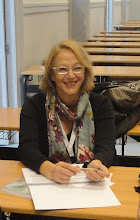Romans

ROMANS IN THE UK - Places to visit:
* Museum of London Roman Londinium exhibition Museum of London, London Wall, London EC2Y 5HN.
* Roman Vindolanda Chesterholm Museum, Bardon Mill, Hexham, Northumberland, NE47 7JN.
* Housesteads Roman Fort Haydon Bridge, Hexham, Northumberland, NE4 76NN
* Fishbourne Roman Palace and Gardens Salthill Road, Fishbourne, Chichester, Sussex, PO19 3QR.
* The Roman Baths Stall Street, Bath, BA1 1LZ.
* Museum of London Roman Londinium exhibition Museum of London, London Wall, London EC2Y 5HN.
* Roman Vindolanda Chesterholm Museum, Bardon Mill, Hexham, Northumberland, NE47 7JN.
* Housesteads Roman Fort Haydon Bridge, Hexham, Northumberland, NE4 76NN
* Fishbourne Roman Palace and Gardens Salthill Road, Fishbourne, Chichester, Sussex, PO19 3QR.
* The Roman Baths Stall Street, Bath, BA1 1LZ.
Labels: Romans


3 Comments:
I always find it surprising what a large impact the Romans have had on the British landscape and culture. When I went to the Roman Baths I remember being amazed at how well-preserved all of the collections were. I especially liked the inscriptions on the 'Four Seasons Façade.'
Along the same lines, I have found a 2003 BBC podcast presented by Melvin Bragg, in which university professors discuss their opinions on the cultural and geo-political legacy left by the Romans in Britain:
http://www.bbc.co.uk/programmes/p00548xn
I have also come across an interesting series called “What the Romans Did for Us,” which includes a number of different programmes, such as “Arteries of the Empire,” “Invasion” or “Ahead of their Time.” I particularly liked the episode “Building Britain” (http://www.youtube.com/watch?v=Nkfcgr5OeGw&feature=related), about Roman farming methods and the introduction of sewers, high-rise apartments, street lighting, window glass, cafes (even beef burgers!) and fire brigades, which shows us just how advanced the Roman civilisation was.
The last link that I would like to share is a news article about a recent discovery of 100 Roman coins in Devon, which has been described as "The beginning of a process that promises to transform our understanding of the Roman invasion." This finding gives us evidence that the Romans settled in regions much further to the west than was originally thought:
http://www.bbc.co.uk/news/science-environment-14340933.
In my opinion Roman Conquest is a very important and interesting part of English history. I have always found fascinating how Romans conquered other countries, leaving them their customs.
In particular, the period that I would like to share with you is the one that follows the Fall of The Roman Empire. It is generally seen as a moment of decline, and from the economic point of view it probably was, because due to the invasions of Jutes, Angles and Saxons, that were not so civilised as Romans, Britain lost important commercial links.
However, in my opinion this period is very interesting and very rich from the cultural point of view because we can find a very beautiful syncretism between roman and germanic cultures, visible in particular in a lot of inscriptions in which both latin and runes are used.
The germanic alphabet, the so called runes or futhorc, had an esoteric role in most germanic rites and celebrations as the historian of the Roman Empire Tacitus wrote in his “De origine et situ Germanorum”, commonly known as “Germania”.
Latin, on the other hand, was the language of the Church and this is the reason why it is very amazing to find inscriptions in which both languages are used, considering that runes were linked to the pagan world. Why, so, Chuch permitted the union of pagan and christian characters? Probably because, as Bede told in his “Historia Ecclesiastica gentis Anglorum”, the conversion of germanic people to Christianity carried on by Augustin, was pacific. The Church understood that it was better not to use violence to christianize them because only with peaceful means they would have abandoned pagan religion.
One example of this syncretism is the Ruthwell Cross, in Scotland. It is a religious cross that talks about events taken from the Bible and in which we can find also runic characters.
The same thing can be said of the Saint Cuthbert’s Coffin, in the Durham Cathedral, in which the names of three evangelists are written in runic alphabet while the name of Luke and of the two archangels Michael and Gabriel are written in latin.
Another interesting object is the Franks Casket, now in the British Museum, in which we find a union not only of the two different alphabets but also of the two different cultures because it is decorated with histories taken from the Holy Writing and with pagan legends.
Insciptions with both latin and runes can be found also in common daily objects such as coins, combs and swords.
Thank you for your interesting contributions and the links you provide
:)
Post a Comment
Subscribe to Post Comments [Atom]
<< Home